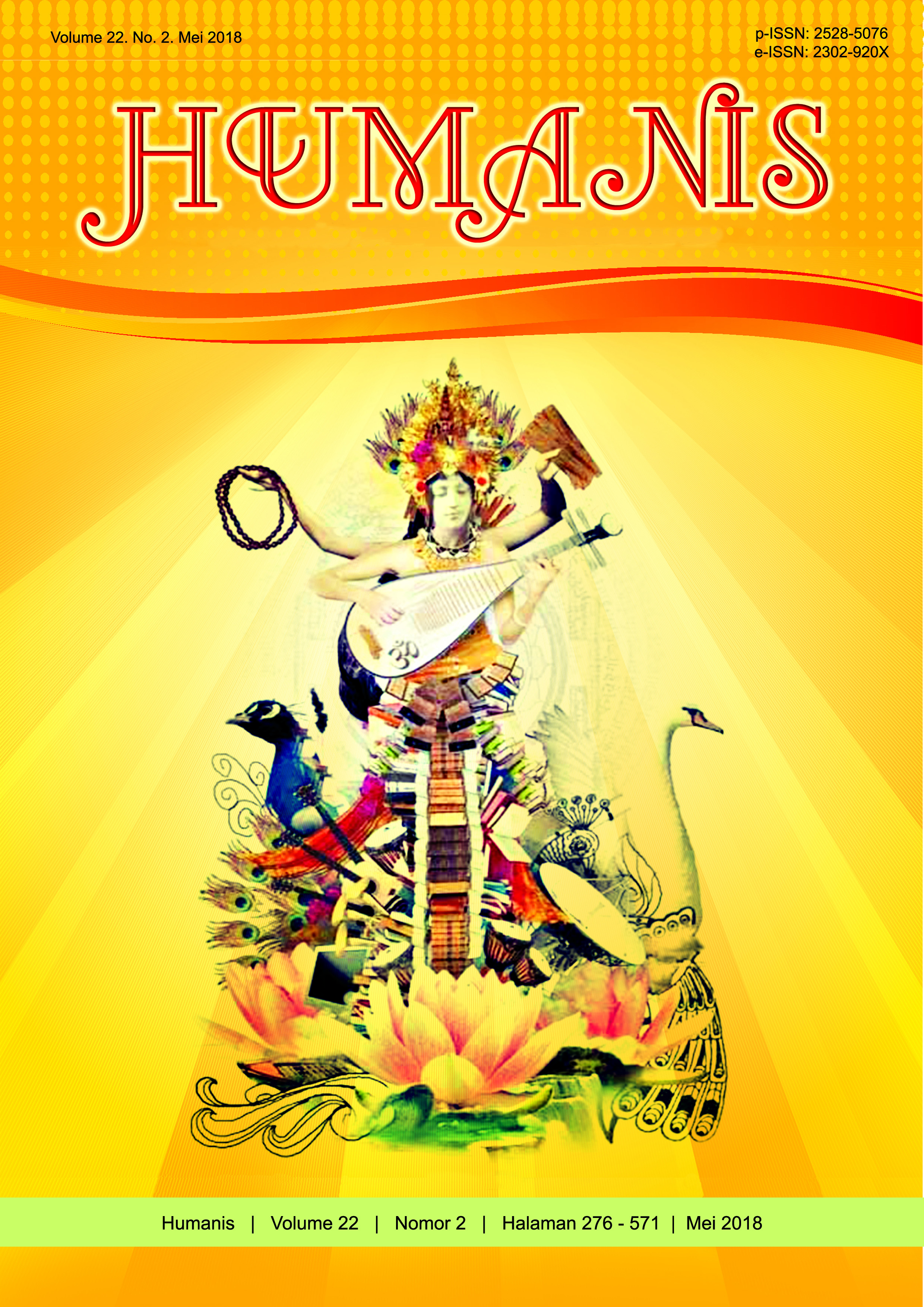Balinese Folktales and Their Translations Equivalence with Reference to Rare Angon
Abstract
This study entitled Balinese Folktales and Their Translations Equivalence with Reference to Rare Angon is intended to find out the types of folktale and the methods applied in the Balinese Folktales Book Rare Angon. This study used descriptive qualitative method and the data collection was done by reading the data source and identifying the relevant data in the data source to be analyzed further. Specifically, the data were taken from ten folktales in the translation book Rare Angon written by Made Taro (2015) and translated by Alit Ida (2015). Finally, the data were classified in accordance with their types and purpose of analysis. The theory used to analyze the types of folktale was proposed by Norton (1987) and Meaning-Based Translation: A Guide to Cross-Language Equivalence was proposed by Larson (1984). The findings obtained from this study show that: (A) There were 5 out of 6 types of folktale found in the translation book Rare Angon namely cumulative tales (12 data), beast tales (4 data), magic tales (3 data), pourquoi tales (3 data), and realistic tales (6 data); (B) There were 5 methods of translation equivalence when the concepts shared namely translation equivalence by using non-literal lexical equivalence (2 data), descriptive phrases (4 data), by using related words (2 data), generic-specific words (3 data) and secondary or figurative senses (2 data); (C) There were one method of translation equivalence when the concepts unknown named equivalence by loan word (1 data).


















